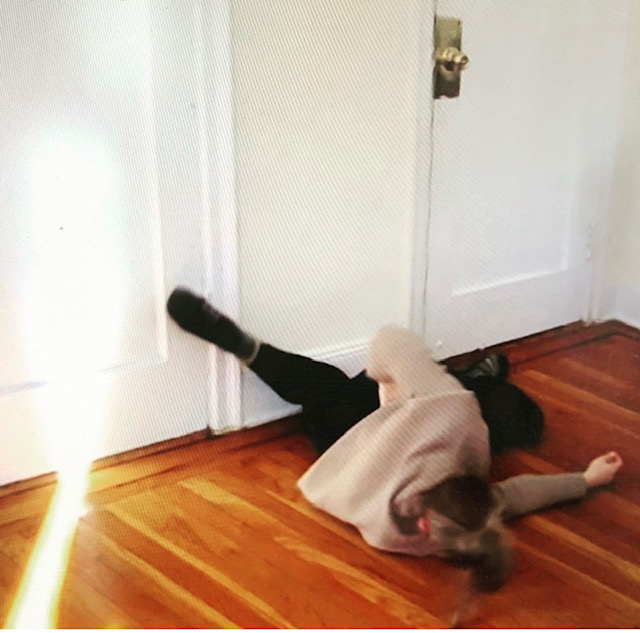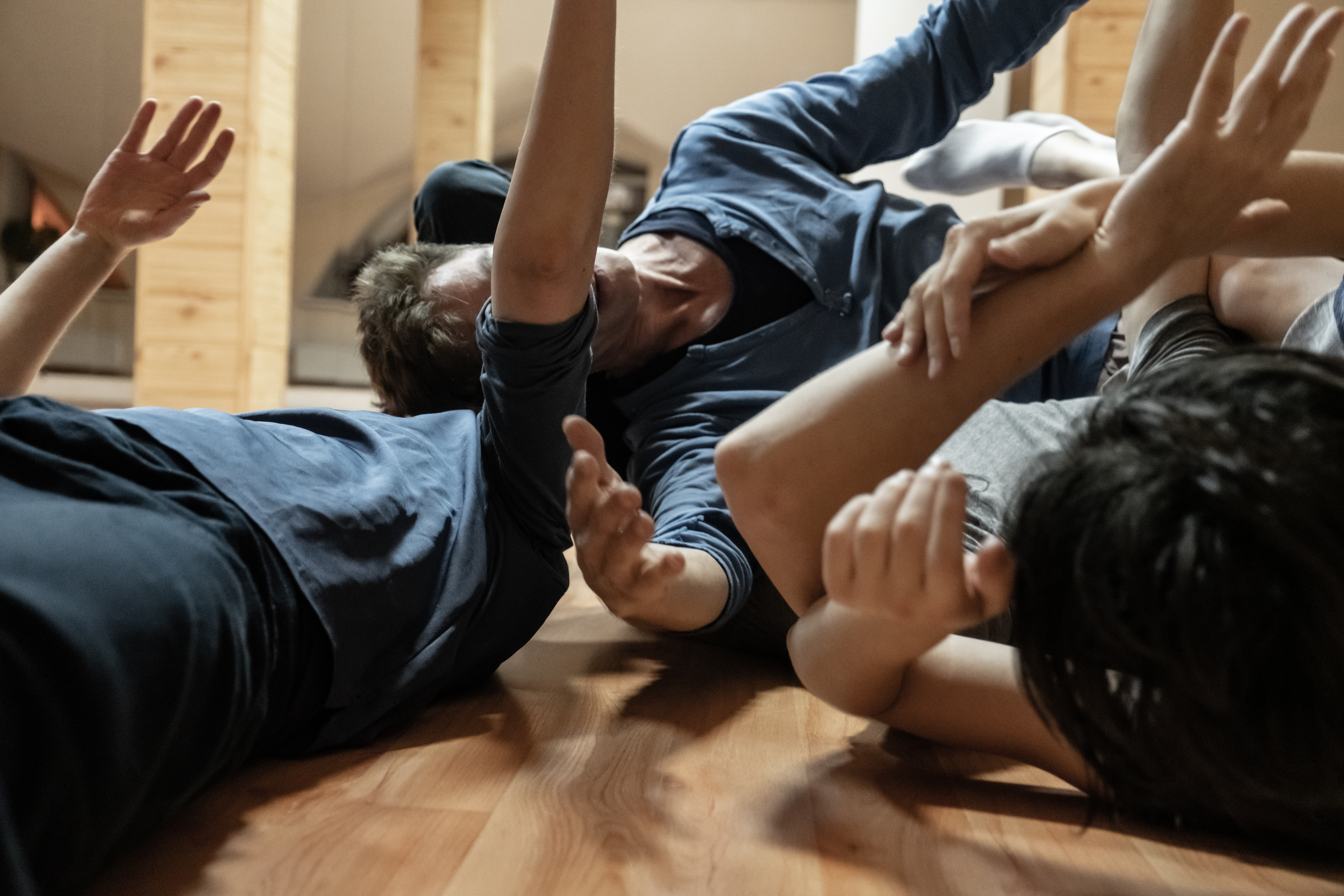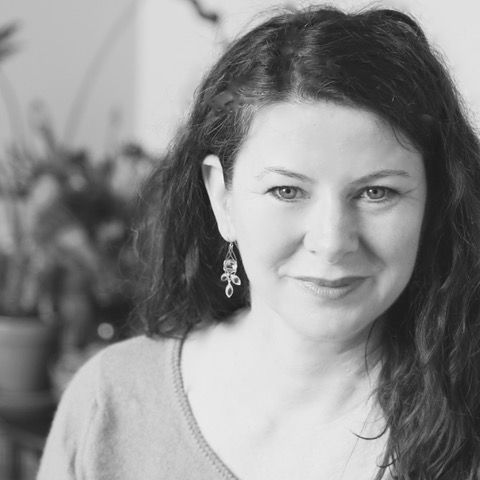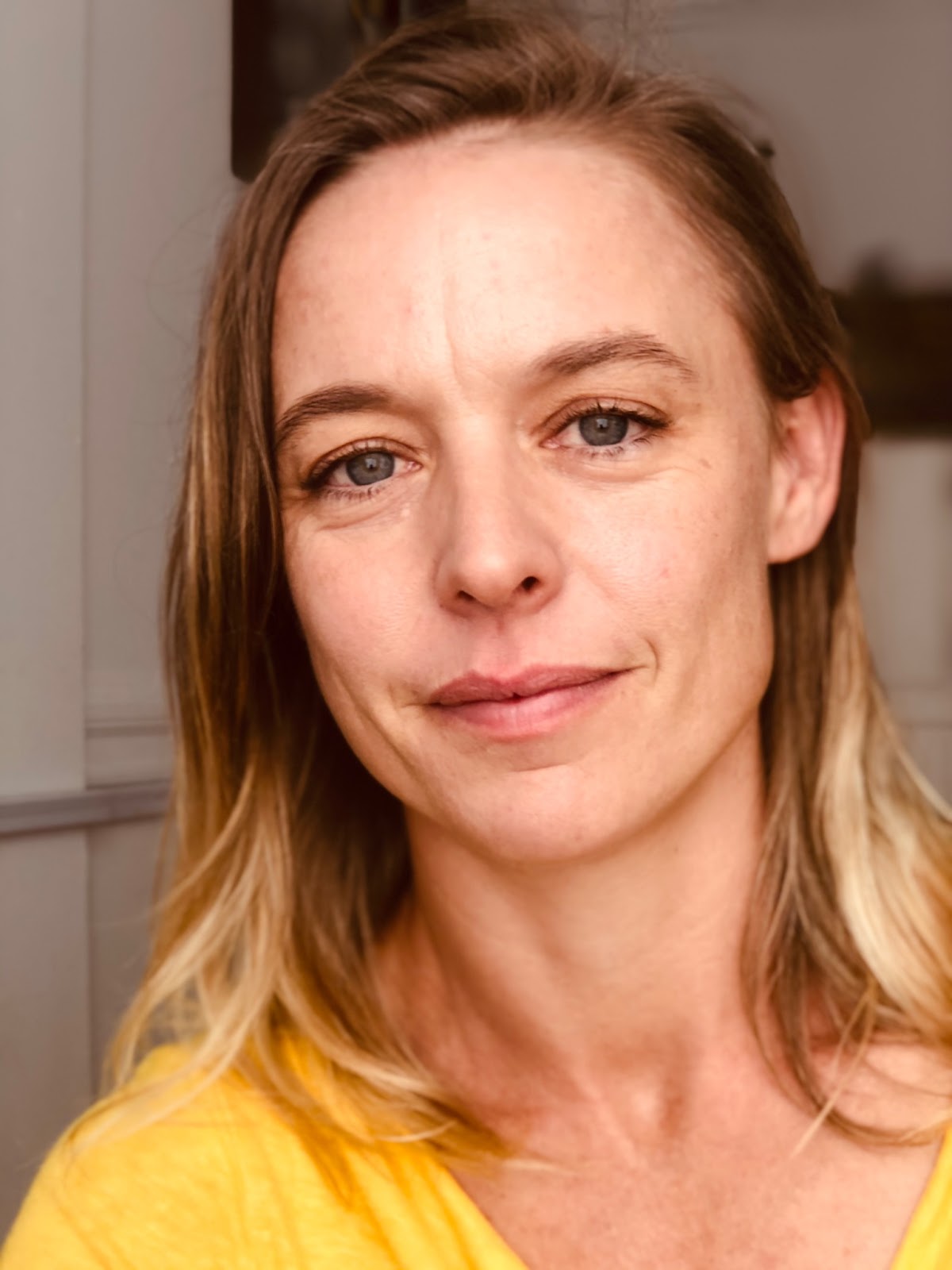
This is the first entry of a three-part featured blog post series about the therapeutic movement and culture-building modality SE+AM created by New York-based dancer, somatic therapist, and Somatic Experiencing practitioner, Weena Pauly-Tarr. Subsequent featured blog posts will follow within 2022.
Born out of the necessity of pandemic distancing and shutdowns, from the loss of shared open spaces and fellow dancing bodies, I created a group online with a few colleagues where we could move without talking within the magical albeit limiting spaces of Zoom technology. I knew in a very elemental way I needed to see others and be seen differently than the flood of online offerings the global pandemic made possible. To try and optimize this new normal felt like a replication of an old business model with which I no longer felt aligned. Staying alive felt like enough. The experience of being alive became acute and palpable when the hobbled world reoriented to simply sustaining life, not optimizing it. I wanted more of that, to orient around the felt experience of living. Being in body-centered spaces for most of my life, I had not fully acknowledged the essentiality of their presence in my day-to-day for my own solid sense of aliveness until they weren’t there. By shifting my orientation to the impulse of aliveness in the presence of others, what unintentionally occurred was a profound sense of wholeness, connection, and resilience. These were welcome bi-products for pandemic living, and I felt nourished by this elemental shift of attunement to bodily impulse. With impulse as my guide, I let go of knowing what the outcome would be and made a group space online where the impulse to survive, the impulse to be alive, the impulse to create all had value and were revered. Before I could find words to explain what we were doing, we were simply doing it. Inspired by the people that came to these classes and workshops with me, I shaped them into what I now call, SE+AM.

SE+AM stitches together the principles and physiological frames of Somatic Experiencing with the movement practice of Authentic Movement into a group process. Somatic Experiencing (SE) offers a physiological frame for how survival impulses shape our habituated patterns of connection and protection. Authentic Movement (AM) is an improvisational movement practice that uses the roles of "mover" and "witness" to explore bodily impulse. SE+AM uses both ideas to explore the relationship of impulse to connection, protection, and creation between a mover and a witness. In these groups, authenticity by way of impulse has permission to be explored and to be witnessed, to illuminate our patterns of relating, and to inspire new ways of experiencing aliveness in ourselves and in others. When there is a shift of orientation to what is alive in us and towards regarding that aliveness in others, disruptions in our “how to be” patterns become the creative forces for new ways of being together. We end up creating a new culture. A culture that practices valuing the emotional, guts, blood, flesh, and felt impulses of our aliveness and commits to creating good conditions for its expression. Its value lies solely in the essential attention to that which is expressing aliveness. There is nothing to show for it, no metric for determining its effect, and no book to validate its academic rigor. It is simply the experience of being a living body without the need for capturing and translating into another form. In a culture that clouds our deeper knowing that there is inherent value in simply being alive, it is a radical shared act of rebellion to claim the experience of aliveness as a worthy endeavor, valuable unto itself and without any need to translate.
This process of translating a neurological impulse, a sensation, a vibratory experience into accurate words and well-designed sentences isn't an easy one. While verbal processes have been both incredibly enriching and valuable for me throughout my life, they have also felt like a devaluation of my non-verbal experiences. And yet, even in the world of somatics, there is almost always an expectation that at the end of the day, body-centered experiences are valued through the use of language. A non-languaged experience unto itself does not hold value until spoken of or written about. It is almost as if what doesn’t fit into words doesn’t have real importance and perhaps doesn’t even really exist.

Certainly, there's nothing new about revealing the cultural phenomenon of valuing language over other forms of expression. The deeply-rooted effects of Descartes' mind-body split infiltrate all of the nooks and crannies of western culture. This notion of “brain-on-top closer to the heavens” and therefore more valuable than our base survival instincts that bypass cognition, is well known. Decades of performing, training sessions, somatic therapies, dances, rehearsals, thousands of hours spent investigating bodies and movement, bodily expressions and feelings, all of which disappear the moment they happen is the way I have spent most of my 46 years. Writing this article has been a time-staking difficult one for me. The process of translating an experience in my body to a verbal one is not the only inhibiting factor. The idea of pinning down a moment with a word and having it sit still on a page creates a level of discomfort that I can't quite get to the bottom of. Having lived most of my life without having any tangible artifact to show for my work, I’m not sure I am well equipped to handle the after-effects of creating something that remains the same through time. Yet here I’ll stay, in these words, attempting to explain a thing that changes the moment it is captured, feeling the shifting fluidity of ideas and states. I almost wish the words left the page the moment they have been read. Here I grapple with sympathetic activation and emotional accountability, curious about what happens when I stay. This is a place I consider an edge zone, a place that is neither known nor totally unknown, that feels uneasy and is rich with disruption of patterning and possibility. And as I work here to create something tangible, I am curious what happens when I hang out with the false feeling of my aliveness being captured in time losing accuracy and clarity in its stillness. This edge zone is a place we find ourselves often in SE+AM. It is within this sparky unease that an impulse for something different is revealed, a crack in the pattern shows up and offers a new way to be with what is coming alive right here.
Ironically, I talk a lot in describing the work I do. I use words to describe images, tell stories and define locations in a body. I use words to explain what I mean when I invite an exploration of an edge zone, “an internal place of activation that is tolerable but not comfortable.” Beneath all my language, what I want to elevate is what is being experienced without words, these uneasy places that we experience all the time that evoke our patterns and strategies. We either move to soothe the discomfort, extend the pleasure, override and carry on, or occasionally get curious about what the unease reveals. When cracks happen, what spills into the broken space, the awkwardness beyond our familiar frames, the expression of a different way of being also spills itself into these spaces. SE+AM is a place that holds that spillage, that hosts stories of disruption, where something that rarely has the opportunity to take shape in the presence of others emerges. This is the action of impulse. The fleshy experience beneath the familiar birthed from an impulse is a precious moment of aliveness. I feel deeply protective of these living expressions of difference and surprise. I want to cultivate places and spaces where a live impulse is granted permission to be witnessed, experienced, reckoned with, and valued. And perhaps not translated into any recognizable language. It is from this passionate inquiry of impulse that SE+AM came about. And it is here where our experience of being living bodies together can be reckoned with, can be felt, seen, and heard in its own form.
Check Weena Pauly-Tarr's contributor bio to learn more about her life and work.
Part 2/3 of this series is, SE+AM: The Value of Aliveness


